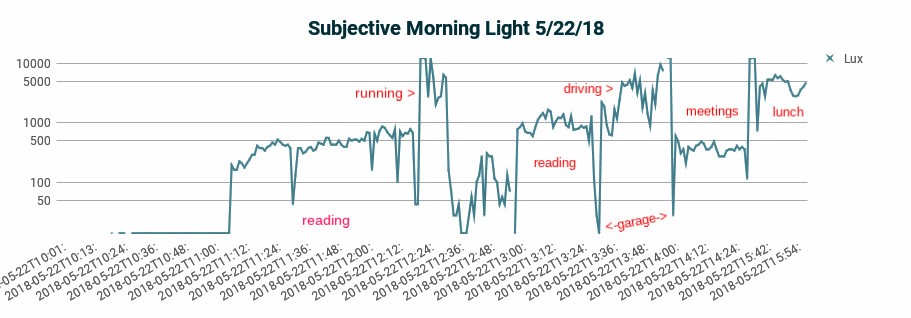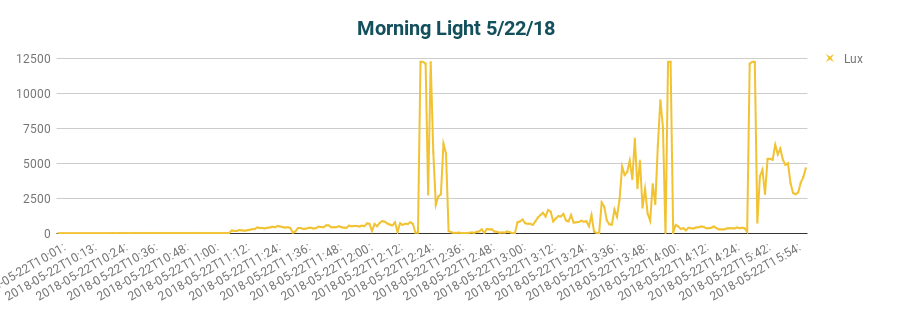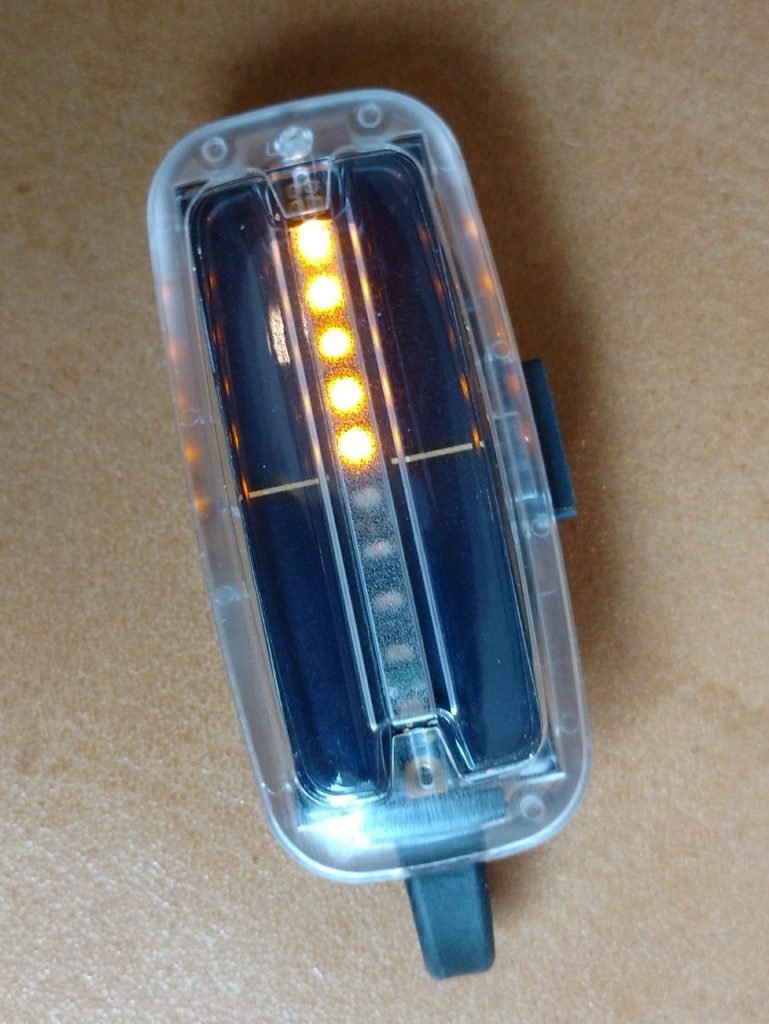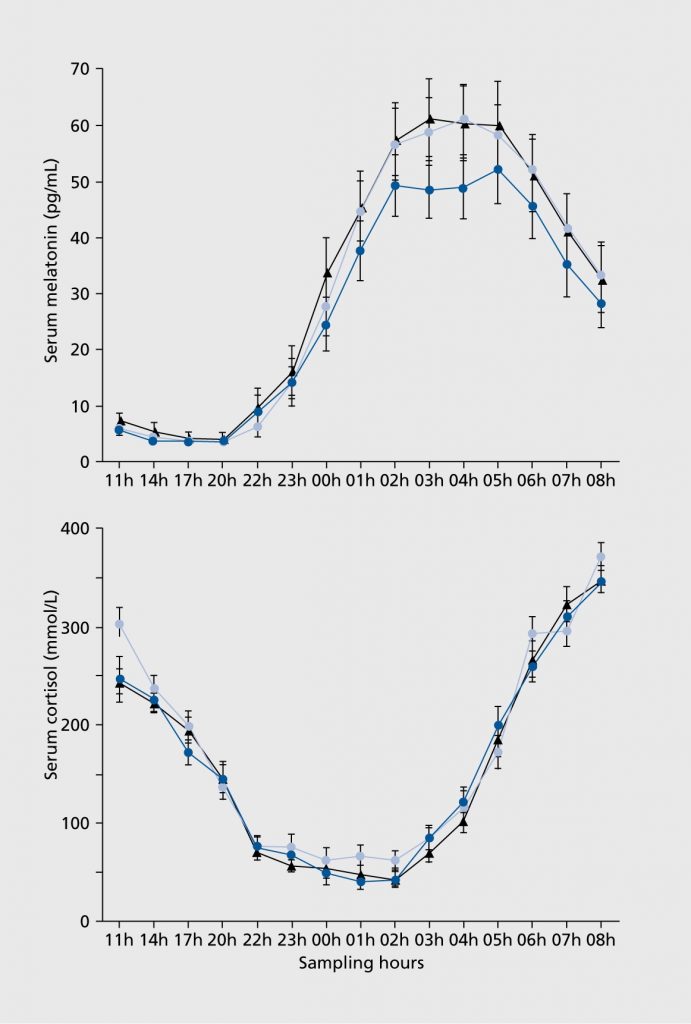Who you gonna believe, this gadget or your lying eyes?
You live in an cocoon made of steel, glass, rubber and wood. Seduced by the simplicity of electric lights and herded by a tight schedule, you see only slivers of sunlight as you hustle to school or work each day.
You think your life is well lit. It’s not. You’re a terrible judge of light’s true intensity. You get just a fraction of the intense light required by your brain and body for optimal daily functioning.
If sunlight was food and metered with calories, you’d be diagnosed as an anorexic who subsists on spoonfuls of Splenda.
Without a 30-minute dose of bright light each morning, your circadian clock can derail, affecting everything from gene expression to hormonal ebbs and flows to testosterone levels to virus virility to brain waves to immunity to REM patterns to fertility to heart rates to hunger to cancer.
More immediately and tangibly, light starvation messes with your focus, sleep, and mood. The 2012 book Chronotherapy, by Michael Terman and Ian McMahan of Columbia and CUNY, summarizes the most obvious injuries caused by an off-kilter circadian clock: gloom and despair, excessive sleep, all-day sluggishness, inability to get work done, self-imposed isolation, and pervasive anxiety.
Trying to understand the intensity and timeline of my own light exposure, I recently started conducted a personal experiment. I wore a SunSprite, a 4 x 1.5 centimeter plastic light meter invented in 2014 by two Harvard professors. The $100 gadget neatly harnesses photovoltaic cells to both measure light and charge itself. The SunSprite clips to the neck of my shirt, getting roughly the same light exposure as my face.
Numerous studies have found that it takes 30 minutes of 10,000 lux light before noon to keep your circadian clock on tempo. (The average person’s circadian clock slides 10-15 minutes later every day, even without additional shoves from screens, caffeine, alcohol or Ritalin.)
Wearing the SunSprite, I’ve learned three things:
- Unless I go out of my way —ie consciously staying outside — I don’t get enough bright light in the morning.
- My perception of “bright” falls several orders of magnitude short of the clinical definition of bright.
- Undershooting my morning light quota by 50% — getting just 15 rather than 30 minutes of bright light before noon — has a negative effect on my mood and alertness in the late afternoon.
Last Tuesday, May 22, was a good example of all three phenomena.
As the first chart below illustrates, after getting up at 7am, I drank coffee and read for an hour just a few feet from a big, west-facing window (medium upslope). I went for a ten minute run outside (peaks) with occassional overhead trees. Back home by 8.35am, I showered and ate breakfast, did some computer work sitting by same window, then drove thirty minutes to attend some meetings in a cafe with giant windows. At 11.30, I walked outside for a couple of minutes, then sat in a restaurant in a front table facing plate glass windows.
By my standards — and probably most people’s — this was a well lit morning. My various work sessions, all near big windows, felt brightly lit. The outdoor light felt at least two times brighter than the light indoors.
A log graph of the morning’s light exposure (below) conveys what my eye saw as it constantly adjusted to normalize my moment-by-moment reality.

(More on accessing granular SunSprite data here.)
But, as you’ll see below, I was actually getting very little bright light. I didn’t realize this because real bright light — bright light as it’s clinically defined — is far brighter than what I get inside sitting by a window.
While humans describe light using just a handful of labels— dark, dim, decent, bright, or blinding — light actually comes in millions of shades. 1 lux is defined as the brightness of a candle spread over one square meter. Starlight is 0.002 lux. In clinical terms, bright light is 10,000 lux or more, which is easy enough to get if you’re outside. Even on a cloudy day, you may be getting 5,000 to 20,000 lux when walking or running beneath the open sky. A sunny day can be 100,000 lux or more. (To help treat Seasonal Affective Disorder (SAD), Amazon sells dozens of light boxes that generate 10,000 lux intensity at 1–3 feet. Here’s advice on buying a light box.)
Unfortunately, the light you experience inside a building or vehicle pales in absolute terms. At four feet, a reading lamp typically delivers just 25–75 lux. And while sitting three to five feet from a big window on a sunny day may feel feel bright, you’re often just getting 200–1,000 lux of exposure (assuming you’re not actually sitting in a patch of sun.) Light dims as a square of the distance of its source.
The disparity between light’s intensity as perceived by the human eye versus light’s actual intensity is the product homeostasis — a finely crafted survival mechanism that works constantly to make the present situation feel normal. Thousands of generations of evolution have trained the eye to lie to the brain. While the eye and body experience light on an absolute scale, the eye reports brightness using what amounts to a logarithmic scale, with each 10-fold change in intensity sensed as roughly an equal step, whether up or down. This sensory compression allows animals like us to use the same set of tools to maneuver in the sun-bleached desert or on a moonlit night.
All of which means that Tuesday’s actual light intensity, as recorded by my SunSprite, was far more sporadic than I thought and, more importantly, did not add up to a minimum morning dose.

The SunSprite records light exposure once a minute, then aggregates any light exposure over 2,500 lux towards an overall goal of 30-minutes at 10,000 lux. By noon on this particular Tuesday morning, I had gotten less than halfway to the desired dose of 30 minutes of 10,000 light.

Thinking about my meager 50% — effectively a UV fail — I realized that most of my Tuesdays fit the exact same pattern. Because I’m often rushing to various standing meeting commitments and have a pub run scheduled every Tuesday evening, I rarely bother to run more than a mile in the morning. Some mornings I skip the run. Most Tuesdays, I spend the rest of the morning inside — unlike most other mornings in my week, I don’t walk to and from a coffee shop.
In several subsequent Sunsprite tests on Tuesdays, I’ve consistently come up short as well… one Tuesday getting 6 units by noon and another getting 4 units. This week, it was cloudy and took me until past 1pm to get to 50%, despite a 20 minute morning run.
I’ve noticed over the last couple of years of this weekly work schedule that on Tuesdays I get REALLY dozy between 3 and 6pm. Some Tuesdays, I’ve actually resorted to 10 second naps at traffic lights. Indeed on this particular Tuesday afternoon, the one after the dim morning I charted above, I resorted to taking a nap from ~5 to 5.30pm to get up enough gumption to join the 6.30 pubrun.
This regular Tuesday afternoon slump has been particularly puzzling because my Monday nights are pretty tame… no beer, no late movies.
So if it’s true I usually don’t get enough sun on Tuesday mornings, what actual mechanics explain my drowsy Tuesday afternoons?

In terms of simple hormones, the chemical gears that connect a solid dose of morning bright light to later well being are well-documented. First, a solid dose of bright morning light immediately suppresses doze-inducing melatonin and triggers a daylong buzz of energizing cortisol. Then, twelve to sixteen hours later, the day’s last circadian gear clicks, and a bath of melatonin pours over sparking neurons to bring sleep’s darkness.
That daily sequence is just a schematic, though, a single thread in a nearly infinite mesh of cascading metabolic pathways, neural connections, genetic expressions and health outcomes.
We may soon ask: is there anything in the body that is not ruled by the sun god, the circadian clock. Far beyond the media’s periodic expostulations about SAD, disruptive evening blue light, and vitamin D deficiencies, in recent years we’ve learned that:
- more daytime light boosts a baby’s sleep
- 24/7 bright lights in ICUs harm patients
- circadian timing influences chemotherapy’s effectiveness
- many mental disorders are caused by disrupted circadian clocks
- bright light therapy is more effective at treating those disorders (1, 2) than drugs
- circadian disruption correlates with ADHD symptoms
- circadian disruption has a bidirectional relationship with arthritis and other inflammatory diseases
- light therapy improves sleep and mood for Alzheimer’s patients
- two days of camping in dawn-to-dusk sunlight can reset the circadian clock
- a lack of daylight seems to cause heart attacks
- kids in sunlit classrooms learn 20–25% more than kids in classrooms without sunlight
- circadian clocks are disrupted in both anorexia and obesity
- blue light is a more effective stimulant than 2 cups of coffee
- 30 minutes of daily sunlight reduces a child’s odds of IBD by 20%
- liver and skin cells operate on light-activated circadian cyclesindependently of the hypothalamus, the body’s main circadian regulator
After several centuries on the wane, the sun’s sphere of influence is growing again. As science’s tools become more powerful, it’s possible to connect dots across vast new scales of magnitude, ranging from the subatomic particle to the organism. Two dimensional snapshots like x-rays are giving way to 3D videos (time-lapsed fMRIs) and even 4D holograms. We’re abandoning the 20th century’s simplistic faith in mechanistic, single-path causalities. We now (and again) glimpse the human body’s gloriously multi-modal, multi-dimensional, fractally-complex Rube Goldbergness… all set in motion each morning by a tiny, spinning golden ball.



